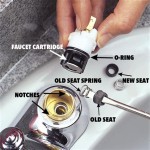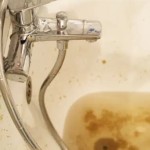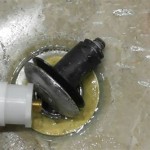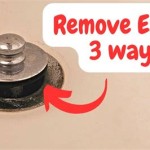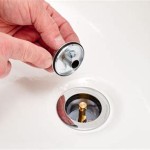Porcelain Enameled Steel Bathtub Reviews: A Comprehensive Guide
The bathtub remains a central fixture in many bathrooms, providing a space for relaxation and hygiene. Among the various materials used in bathtub construction, porcelain enameled steel holds a prominent position. This material combines the structural strength of steel with the aesthetic appeal and durability of a porcelain enamel coating. Understanding the characteristics, advantages, disadvantages, and user experiences associated with porcelain enameled steel bathtubs is crucial for informed decision-making during bathroom renovations or new constructions.
This article provides a detailed examination of porcelain enameled steel bathtubs, encompassing aspects such as their manufacturing process, performance attributes, common issues, and a compilation of reviews and feedback from users. The objective is to present a comprehensive overview that helps prospective buyers evaluate whether a porcelain enameled steel bathtub aligns with their specific needs and preferences.
Understanding the Manufacturing Process and Material Composition
Porcelain enameled steel bathtubs are manufactured through a process that involves fusing a layer of porcelain enamel onto a steel base. The steel, typically heavy-gauge, provides the structural foundation of the bathtub, ensuring its rigidity and resistance to deformation. The porcelain enamel is a glassy coating composed of minerals and other materials that are heated to high temperatures and then applied to the steel surface. This firing process creates a strong bond between the steel and the enamel, resulting in a durable and aesthetically pleasing finish.
The specific type of steel used in the manufacturing process can vary. Some manufacturers use low-carbon steel, while others opt for steel alloys that offer enhanced corrosion resistance. The thickness of the steel is also a critical factor, as it directly impacts the bathtub's structural integrity and its ability to withstand the weight of water and bathers. Thicker steel gauges generally correlate with increased durability and a reduced risk of flexing or bending.
The porcelain enamel coating also plays a critical role in the overall quality and performance of the bathtub. The composition of the enamel can vary, affecting its hardness, resistance to chemicals, and color retention. High-quality porcelain enamel formulations are designed to resist chipping, scratching, and staining, ensuring that the bathtub maintains its appearance over time. The application process of the enamel is also important, as an even and consistent coating is essential for preventing imperfections and ensuring uniform protection of the steel substrate.
Advantages of Porcelain Enameled Steel Bathtubs
Porcelain enameled steel bathtubs offer several advantages that make them a popular choice for many homeowners. These advantages include:
Durability: The combination of steel and porcelain enamel creates a durable and long-lasting bathtub. The steel provides structural strength, while the enamel coating protects the steel from corrosion and wear. Properly maintained porcelain enameled steel bathtubs can last for many years without significant degradation.
Heat Retention: Steel, while not as insulating as cast iron, does retain heat reasonably well. This property helps to keep bathwater warmer for a longer period compared to acrylic tubs. While not as efficient as cast iron, porcelain enameled steel provides a decent compromise between cost and heat retention.
Affordability: Compared to alternatives like cast iron or solid surface bathtubs, porcelain enameled steel bathtubs are typically more affordable. This makes them a budget-friendly option for homeowners who are looking for a durable and aesthetically pleasing bathtub without breaking the bank.
Lightweight: Porcelain enameled steel bathtubs are significantly lighter than cast iron tubs, which simplifies installation. The reduced weight makes them easier to maneuver and position, reducing the labor required for installation. This can be particularly advantageous in renovation projects where access to the bathroom may be limited.
Easy to Clean: The smooth, non-porous surface of porcelain enamel makes it easy to clean and maintain. Most common bathroom cleaners can be used to remove dirt, soap scum, and stains without damaging the enamel coating. Regular cleaning with mild detergents is typically sufficient to keep the bathtub looking its best.
Color and Style Options: Porcelain enamel can be manufactured in a wide range of colors and styles, allowing homeowners to choose a bathtub that complements their bathroom décor. From classic white to more modern colors and finishes, there are options available to suit various design preferences.
Disadvantages and Potential Issues
Despite their advantages, porcelain enameled steel bathtubs also have some drawbacks that need to be considered. These include:
Chipping and Scratching: While porcelain enamel is relatively durable, it is susceptible to chipping and scratching if exposed to sharp objects or abrasive cleaners. A chipped or scratched enamel coating can expose the steel substrate to moisture, potentially leading to corrosion over time. Care must be taken to avoid dropping heavy objects into the bathtub and to use non-abrasive cleaning products.
Rusting: If the porcelain enamel coating is damaged, the exposed steel can rust, especially in areas with high humidity. Rust can stain the enamel and weaken the structure of the bathtub. Regular inspection of the enamel coating is recommended to identify and address any chips or scratches promptly.
Noise: Steel bathtubs can be noisier than cast iron or acrylic tubs when water is running into them. The thin steel can vibrate and amplify the sound of the water. This can be mitigated by using sound-dampening materials during installation, such as foam or rubber pads placed beneath the bathtub.
Heat Loss: While steel retains heat better than acrylic, it is not as efficient as cast iron. Bathwater in a porcelain enameled steel bathtub may cool down more quickly than in a cast iron tub. This can be addressed by adding insulation around the bathtub during installation or by using a bath mat to reduce heat loss through conduction.
Limited Design Options: Compared to acrylic or solid surface bathtubs, porcelain enameled steel bathtubs may have a more limited range of design options. The manufacturing process can be more challenging for complex shapes and designs. This limitation may be a factor for homeowners who are looking for a highly customized or unique bathtub design.
Potential for Flexing: If the steel gauge is too thin or the bathtub is not properly supported, it may flex or bend under the weight of water and bathers. This flexing can cause stress on the enamel coating, increasing the risk of chipping or cracking. Proper installation and adequate support are essential to prevent flexing.
Analyzing User Reviews and Feedback
User reviews and feedback provide valuable insights into the real-world performance and experiences of owning a porcelain enameled steel bathtub. A comprehensive analysis of these reviews reveals recurring themes and common issues that prospective buyers should consider.
Positive Feedback: Many users praise the durability and longevity of porcelain enameled steel bathtubs. They appreciate the ease of cleaning and the ability of the enamel coating to resist stains and discoloration. The affordability of these bathtubs is also frequently mentioned as a positive factor, making them an attractive option for budget-conscious homeowners. Several reviews also highlight the variety of colors and styles available, allowing users to find a bathtub that matches their bathroom décor.
Negative Feedback: The most common complaint among users is the susceptibility of the enamel coating to chipping and scratching. Many reviewers report that even minor impacts can cause damage to the enamel, exposing the steel substrate. Rusting is also a recurring issue, particularly in areas with hard water or where the enamel coating has been compromised. Some users also mention the noise generated by the bathtub when water is running into it, finding it to be disruptive. Concerns about heat loss are also expressed, with some reviewers noting that the bathwater cools down relatively quickly.
Installation and Support: The importance of proper installation is consistently emphasized in user reviews. Reviewers who have experienced issues with flexing or cracking often attribute it to inadequate support or improper installation techniques. It is recommended to hire a professional plumber or contractor to ensure that the bathtub is installed correctly and adequately supported. Some reviews also mention difficulties with customer service or warranty claims, highlighting the importance of choosing a reputable manufacturer with a solid warranty policy.
User reviews generally paint a picture of a product that presents a good value for the price and is rather easy to clean. The most important thing that users repeatedly bring up is the chipping and scratching of the enamel. It's worth noting that with appropriate use, these bathtubs can last a long time.
In conclusion, porcelain enameled steel bathtubs offer a balance of durability, affordability, and aesthetics. While they possess several advantages, it is essential to be aware of their limitations and potential issues. By carefully considering the manufacturing process, performance attributes, user reviews, and installation requirements, prospective buyers can make an informed decision about whether a porcelain enameled steel bathtub is the right choice for their needs.

Mansfield 30 In X 60 White Porcelain Enameled Steel Alcove Soaking Bathtub Left Drain The Bathtubs Department At Com

Mansfield 30 In X 54 White Porcelain Enameled Steel Alcove Soaking Bathtub Right Drain The Bathtubs Department At Com

Mansfield Pro Fit Steel 30 In X 60 White Porcelain Enameled Alcove Soaking Bathtub Right Drain The Bathtubs Department At Com

Hana Mauicast Plus 60 X 32 Porcelain Enamel Alcove Bathtub

Mansfield Pro Fit Cast 30 In X 60 White Porcelain Enameled Steel Alcove Soaking Bathtub Right Drain The Bathtubs Department At Com

Streamline 60 In X 30 Porcelain Enameled Steel Alcove Bathtub External Right Drain Brushed Gold L 104 06 R Bgl The Home Depot

Steel Vs Cast Iron Tub Durability Cost More Long Home

4 Common Bathtub Materials Pros Cons What To Buy For Your Bathroom

Aloha 60 X 30 Porcelain Enamel Alcove Tub Left Drain Vtb

Reviews For Bootz Industries Mauicast 60 In X 30 Rectangular Alcove Soaking Bathtub With Left Drain White Pg 1 The Home Depot
Related Posts

